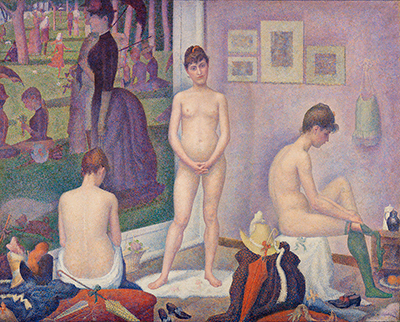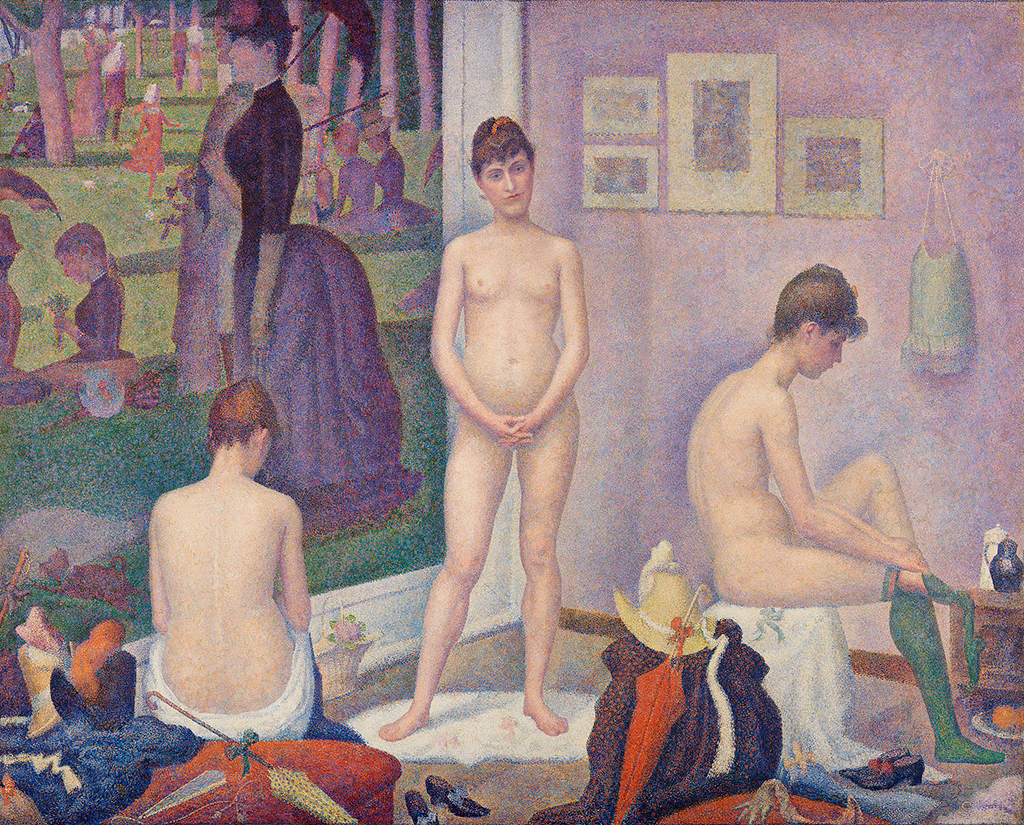The Models is oil on canvas painting by George Seurat created between 1886 and 1888 and held by the Barnes Foundation in Philadelphia. The painting, also known as The Three Models and Les Poseuses, was revealed in 1888 at the Salon Des Independents. The piece is the third in George Seurat's six main works. The models were George's reaction to detractors, who deemed his skill inferior for being cold and unable to represent life. He offered a naked illustration of models in three different poses, disrobing, posing, and dressing in the artist's studio as an answer. On the left side, the model sits with a partial robe, showing her back to the viewer, while in the center, the model stands before the viewer, grasping her hands, and sits with her stockings on the right side. Seurat's A Sunday on La Grande Jetta hangs on the left side of the studio wall.
The Models is regarded as unique due to its pointillist method and the political insinuation of its representation of the naked female body. The model's free appearance shields the artist against charge stemming from its privacy and exposure rights. The publicity right gives the individual the capability to manage the mercantile use of her reflection, likeness, and name. In contrast, right privacy concerns the ability to choose which parts of self and what manners are to be disclosed to the public. The two rights' purpose is to protect human independence and dignity. In an 1890 Harvard law article, Louis Brandeis and Samuel warren first recognized the right to privacy as a distinctive right, the right to be left alone; this was two years after the completion of The Models.
Emphasizing public and private volatility, the models depict a naturally private business swap between artist and model. The painting gives the onlooker an image of a profession that majors on the public distribution of a person's likeness while also showing the profession's intimate part.
The models' range is similar to that of a historical painting, which, by tradition, focused on more elevated styles than the artist's studio. Its creation is also similar to Raphael's three graces. George Seurat opposed tradition by using pointillism to portray these nudes standing next to a painting that celebrates current life. Seurat's focus was for the models to be seen as modern city career women, more like nonchalant posers than enchanting gods.





